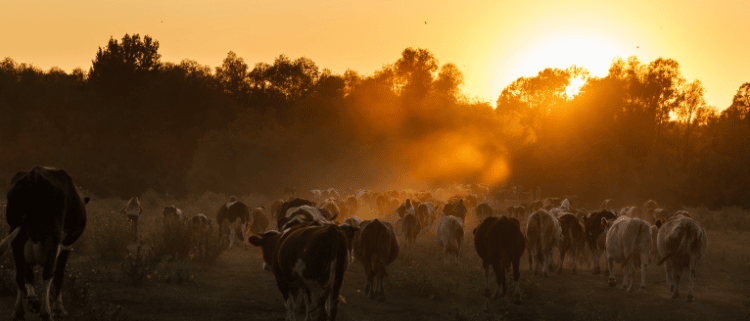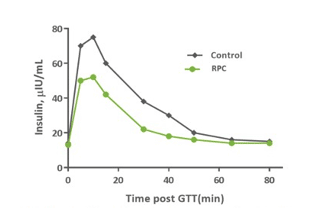Enhancing transition period in dairy cows
Enhancing transition period in dairy cows with phytogenics
by SÉBASTIEN CONSTANTIN, Business Development Manager Phytogenic Bioactives, Pancosma, published in Livestock and Feed Magazine, August 2022
Glucose metabolism regulates the energy supply to cells and tissues for vital functions and, in ruminants, this process is characterised by low glucose concentrations, but also low insulin response in peripheral tissues (Bell, Bauman, 1997; Sasaki 2002).
In a short adjustment period between pregnancy and lactation, a great amount of glucose is required to be directed for milk production. During the transition period, dairy cows face an extremely intensive physiological process.
Glucose sources
The main glucose supply in monogastric species is absorbed in the intestines from ingested food, while ruminants mainly rely on glucose supplied by liver gluconeogenesis. From rumen fermentation, propionate is the main glucogenic precursor, representing over 60% of the substrates, followed by lactate, with approximately 20%, followed by amino acids, minor volatile fatty acids (valerate, isobutyrate) and glycerol (Drackley et al., 2001).
Glucose absorption in peripheral tissues and mammary gland
Glucose transporters (GLUT) exist to carry glucose molecules to be absorbed by cells. There are 13 different types of GLUTs, each with a specific role and operating mode. GLUT1 molecules respond to basal glucose concentration and are found in all body tissues (De Koster and Opsomer, 2013). Among the different GLUT, only GLUT4 responds to insulin stimulation, supporting glucose uptake by skeletal muscle, adipose and heart tissues. Glucose uptake in the mammary gland is very specific and is driven primarily by GLUT1 and GLUT8 and characterised by an absence of GLUT4. As a result, the glucose metabolism process is not modulated by insulin. In terms of quantity, the mammary gland absorbs over 50% of available glucose and can climb as high as 85% when production peaks.
Glucose sparing
Dairy cows exhibit insulin resistance as gestation ends and lactation starts. The cow’s internal processes change tack to ensure a sufficient glucose supply is produced for the calf by directing glucose to milk production and by limiting glucose absorption in peripheral tissue (De Koster and Opsomer, 2013). This phenomenon is known as “glucose sparing”.
Gluconeogenesis inhibition
Gluconeogenesis is the major glucose- producing metabolic process in ruminants. This pathway is regulated by substrate availability and hormones such as insulin and glucagon. Insulin’s role is to inhibit gluconeogenesis and decrease glucose output when necessary.
Phytogenic supplementation to promote milk production
Milk production can be improved by promoting the glucose sparing effect and limiting gluconeogenesis inhibition. We hypothesised that lower insulin levels could lead to a change in glucose distribution, directing more towards the mammary gland and thus improving milk production.
A study was conducted to assess the effect of rumen-protected capsaicinoids (RPC) supplementation responding to a glucose tolerance test measuring blood glucose and insulin concentration (Oh et al., 2017). Glucose concentration was not affected by RPC supplementation post glucose challenge.
Compared to the control, RPC decreased serum insulin concentration post glucose challenge. The area under the insulin concentration curve was decreased by 25% (RPC; see figure 1). In this study, dry matter intake was not affected by RPC supplementation and milk yield tended to increase for RPC treatments compared to the control. Dry matter intake was not affected by RPC and feed efficiency was linearly increased by RPC supplementation. Meanwhile, there was no significant difference observed in NEFA and BHB levels.
Figure 1 Effect of RPC on insulin concentration following intravenous administration of glucose in cows
Rumen-protected capsicum and transition period performance
In 2020-2021, a trial was performed to evaluate RPC supplementation from 21 days before calving through 60 days in milk under commercial conditions. Overall, performance was improved for cows receiving RPC with an 8.6% increase in energy-corrected milk (See figure 2 daily milk yield). Additionally, increased blood glucose, which occurred three days after calving, points to a potential change in insulin response and liver gluconeogenesis.
Promoting glucose sparing and gluconeogenesis
Overall, results suggest that by decreasing the amount of insulin secreted, RPC may have redirected glucose for milk production in lactating dairy cows.
Related articles
Discover our feed additives for cattle




